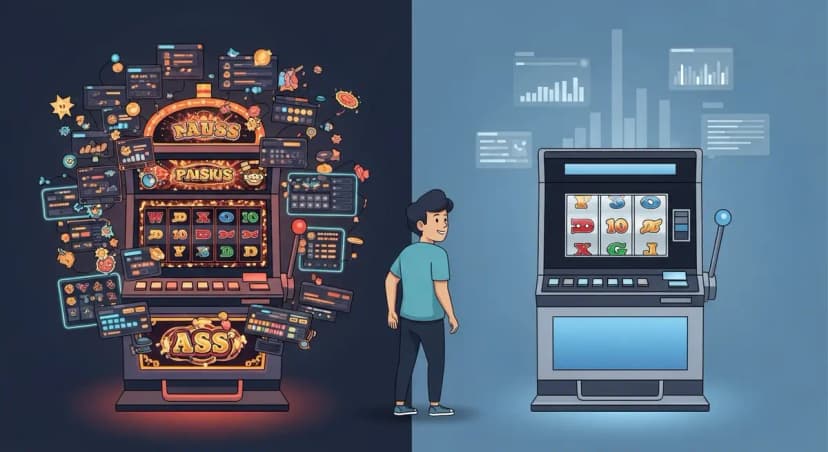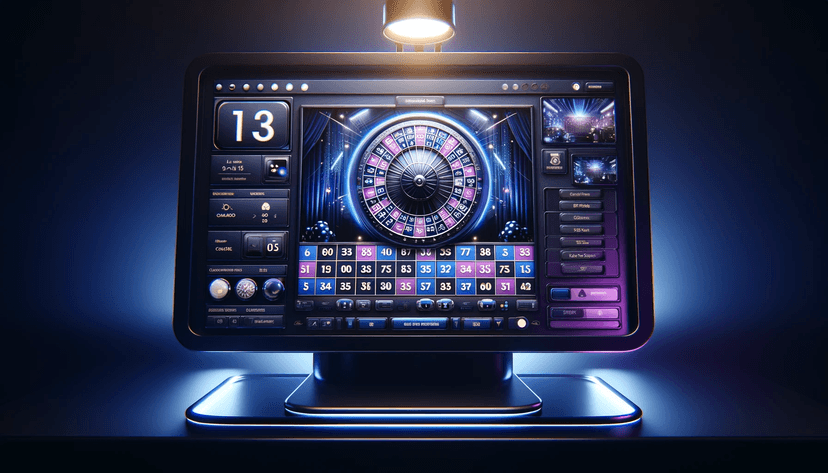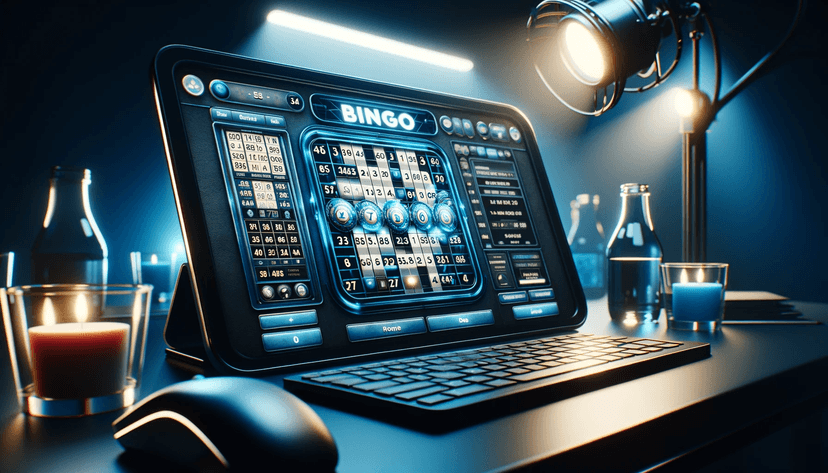Everything About Online Bingo Cards And Calls

Bingo is a household name worldwide, and at its heart are the bingo cards. When playing online, you can use digital bingo cards, or even create your own with a free bingo card generator. Using virtual cards is a breeze, as guidelines are provided to help you out every step of the way.
Another key element to notice are the bingo numbers, also fondly known as bingo calls. You might have encountered terms like "lucky numbers," "winning numbers," or simply "bingo calls." These refer to the colourful list of calls we'll be diving into in this article.
Your Bingo Cards Explained
Bingo cards are essentially the grid you use to play online bingo. Generally, there are two main types. The 5x5 grid is popular for 75-ball bingo, common in the United States. Then there's the 9x3 grid, which is the standard for 90-ball bingo, often called Housie in many places.
75-Ball Bingo Cards
These cards feature five columns and five squares in each. The central square is usually a 'free space', and the rest are filled with numbers. The columns are typically labelled with letters, and the numbers fall within these ranges:
- B: 1 through 15
- I: 16 through 30
- N: 31 through 45
- G: 46 through 60
- O: 61 through 75
90-Ball Bingo Cards
In the UK, these cards are often called "tickets" and are used in 90-ball bingo, or Housie. Each ticket displays three rows across nine columns. Within each row, you'll find five numbers spread out amongst empty spaces. The numbers are organised by column, covering ranges like 1-9, 10-19, all the way up to 80-90.
Understanding Bingo Calls
Bingo calls, also known as bingo numbers or "bingo lingo," add a special flavour to the game. Many players might not be fully aware of the rhymes and stories behind all 90 bingo calls. We'll go through a selection of these colourful calls below.
- Kelly's eye: This popular call could be a nod to the Australian folk hero Ned Kelly or have roots in military slang.
- One little duck: The number 2, looking like a solitary duck. Visualising the shape helps remember this one.
- Cup of tea: Simply means the number 3.
- Knock at the door: This call comes from the familiar rhyme "one, two, buckle my shoe, three, four, knock at the door." Some might also recall it from the Freddy Kruger films.
- Man alive: Named after a groundbreaking BBC documentary from 1965 that captured a large audience and became a popular UK bingo call.
- Half a dozen: Simply means the number 6. Sometimes people might say "Tom Mix" for six.
- Lucky seven: A widely recognized lucky number in bingo and gambling circles globally.
- Garden gate: This call rhymes and fits the familiar "gate" sound.
- Doctor's orders: Refers to the number 9. Historically, 'doctor's orders' might have been linked to remedies or advice.
- Top of the shop: This popular call signifies the number 10. It's a phrase indicating the best or highest rank.
- Legs eleven: The number 11, visually resembling a pair of legs. You might even hear a playful whistle in response in a live bingo hall!
- One Dozen: Simply means twelve.
- Unlucky for some: Refers to the number 13, considered unlucky in many Western cultures.
- Valentine's Day: This call is for the number 14, the day of love.
- Young and keen: A call for 17. You might also hear "Rugby Team" for the same number.
- Sweet 16: A significant birthday milestone around the world.
- Dancing Queen: This call pays homage to the ABBA classic. Give it a listen!
- Coming of age: This relates to the number 18, the age recognised for adulthood in many places.
- Goodbye teens: The call for 19, the last year of adolescence before reaching 20.
- One score: "Score" is an older term for 20. The phrase also alludes to Abraham Lincoln's Gettysburg Address.
- Key of the door: Meaning 21, often associated with reaching a new level of independence.
- Two little ducks: The number 22, carrying on the duck theme from "one little duck."
- Thee and me: This represents the number 23, a pair rhyming with "me."
- Two dozen.
- Duck and dive: This is simple to acquire if the number 2 is represented by a duck and the number 5 follows as a snake. A snake would make a duck dive for cover.
- Pick and mix.
- Gateway to heaven.
- In a state/Overweight.
- Rise and shine.
- Dirty Gertie: Also Known as Dirty Gertie from Bizerte, this World War II song has endured ages to be played in bingo parlors all around the world.
- Get up and run.
- Buckle my shoe: This bingo call is an extension of the children's rhyme from number four. Jimmy Choo is a well-known shoe designer.
- Dirty knee/All the threes/Fish, chips & peas.
- Ask for more: Oliver Twist reference.
- Jump and jive.
- Three dozen.
- More than eleven.
- Christmas cake.
- 39 steps: The Hitchcock picture The 39 Steps, from 1935, is being seen today.
- Life begins: Another bingo call honoring a significant birthday when things start to get wicked.
- Time for fun: Life has started.
- Winnie the Pooh: This bingo call honors A. A. Milne, the creator of the honey bear fable and enduring favorite of British childhood, Winnie the Pooh.
- Down on your knees.
- Droopy drawers.
- Halfway there.
- Up to tricks.
- Four and seven.
- Four dozen.
- PC: This bingo call is in reference to the 1946-53 show centered on the exploits of an unorthodox copper who invented the term "rise and shine." The Adventures of P.C. 49 are still being used as bingo calls years after they originally aired.
- Half a century.
- Tweak of the thumb: I love my Mum
- Danny La Rue: a bingo call that pays homage to the Irish musician known for his passion for cross-dressing, Danny La Rue.
- Here comes Herbie/Stuck in a tree.
- Clean the floor.
- Snakes alive: Linked to the Number Shape: Fifty-Five (and mentioned in 25, duck and dive).
- Shotts Bus: Was She Worth It?
- Heinz's varieties: Despite having many more recipes, Mr. Heinz chose to stop developing variants of his favorite number, 57, so that Heinz baked beans would only be sold in 57 different cans.
- Make them wait.
- Brighton Line.
- Five dozen.
- Baker’s bun.
- Turn the screw/Tickety-boo: Often known as tickety-boo in bingo, it is army slang for everything being alright.
- Tickle me 63.
- Redraw.
- Old age pension: This bingo call shows the customary retirement age in the United Kingdom.
- Clickety click.
- Stairway to heaven.
- Saving Grace.
- Favorite of mine/either way up: If players look at the numbers from the bottom up, they signify the opposite. This is also referred to as "Meal for Two," and order number 69 on a takeout or restaurant menu designates it as such.
- Three scores and ten.
- Bang on the drum.
- Six dozen.
- Queen bee.
- Hit the floor.
- Strive and strive.
- Trombones.
- Sunset Strip: This bingo call is based on an American detective series produced by Warner Brothers between 1958 and 1964, which was shown in prime-time on Saturday nights in the UK.
- 39 more steps.
- One more time.
- Eight and blank: This one is straightforward to find, but you can also see it referred to as "Gandhi's Breakfast", since the number 8 is meant to symbolize a cross-legged, sitting Gandhi.
- Stop and run.
- Straight on through: Related to journeying, but also known as a "fat lady with a duck," which refers to the pictures the numerals may and have portrayed before.
- Time for tea.
- Seven dozen.
- Staying alive: The Bee Gees' 1977 global smash that was featured in the motion picture Saturday Night Fever.
- Between the sticks: Goalkeeper lingo used in football.
- Torquay in Devon.
- Two fat ladies: Two Fat Women Returning to the graphics, the number 88 resembles the curves of two curvaceous women.
- Nearly there.
- Top of the shop.
These are all the bingo numbers, so players can read them once and get to know about the origin. However, some calls are just simple, so there’s no explanation for them.
Learning Bingo Calls
Bingo calls can be easily learned as players can just learn them online by taking quizzes. Just google “bingo call quiz”, and that’s how players will be able to test their knowledge. If they can’t remember every single one, then by taking quizzes, players will be able to learn them much more effectively.
Bingo Calls Chart
It's simple to use the chart to discover the names of the bingo number calls and their origins; all you have to do is click on the numbered ball you want to learn about, and an Answer Box will appear with the information. Afterward, you can either click anywhere outside the Answer Box to get back to the main chart, or use the next and previous arrows inside the answer box to go through each number call explanation one at a time.
Conclusion
Bingo is one of the most played games worldwide, and bingo cards are used to play this game at top online casinos. Players can also generate online bingo cards with a free bingo card generator, as it is not hard at all. In the article, players will find a huge list of bingo calls that are difficult to memorize, but they can take quizzes to learn them.
FAQ
Do bingo cards have to be different?
While each bingo card has a unique combination of numbers, it's possible for multiple cards to be winning cards in different games or patterns. The uniqueness lies in the specific arrangement of numbers on each individual card.
How many bingo cards are there?
To play bingo, you'll typically need at least one entry packet of cards. These packages usually contain between six and twelve cards, suitable for both regular and special games. The specific number of cards and their cost can vary depending on the bingo hall or online platform you're playing with.
Are bingo cards random?
Absolutely, the numbers on bingo cards are generated through a random process. This ensures fairness and unpredictability in every game. There's an incredibly vast number of potential number combinations, approximately 5.5x10^26, meaning a huge variety of unique playing cards.
Is there a bingo card generator?
Yes, many online tools are available for generating bingo cards. For instance, Canva offers a free bingo card generator that allows you to create as many cards as you need for personal use or events.
Where do bingo numbers come from?
The game of bingo, as we know it, has roots tracing back to 18th-century France. Around the 1770s, a Frenchman developed a variation where numbers from one to 90 were randomly arranged on cards, typically in three rows and nine columns.
How many numbers are in bingo?
In a standard 75-ball bingo game, numbers from 1 to 75 are used. The bingo card itself typically features five columns, labeled B, I, N, G, and O from left to right. The central square is usually a 'free space,' which is automatically marked off.
How do I get a bingo number?
In an online bingo game, a number is typically drawn by clicking a 'draw' or 'select' button within the game interface or a number generator. In a physical setting, numbers are called out by a bingo caller after being randomly selected.
What bingo numbers are called the most?
While bingo is a game of chance, some studies suggest certain numbers appear more frequently. Historically, numbers like 6 and 4 have been noted as common. Other numbers such as 42, 62, 72, 51, 64, 81, 47, and 57 have also been observed to be called more often than average.
What is the luckiest number in bingo?
Despite bingo being fundamentally a game of chance, some players consider certain numbers 'luckier' than others. Number 6 is often cited as the most common winning number and, by extension, the luckiest by many enthusiasts.








